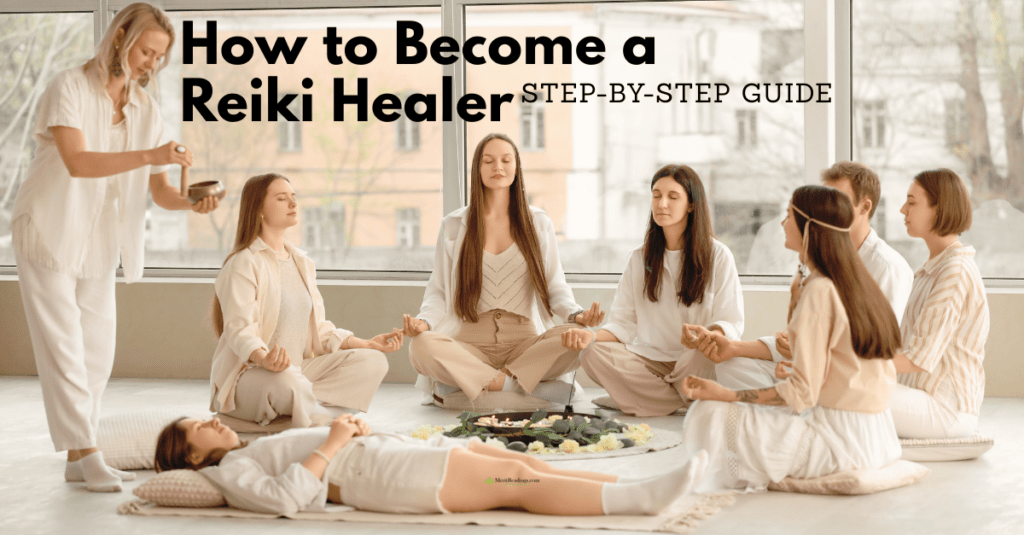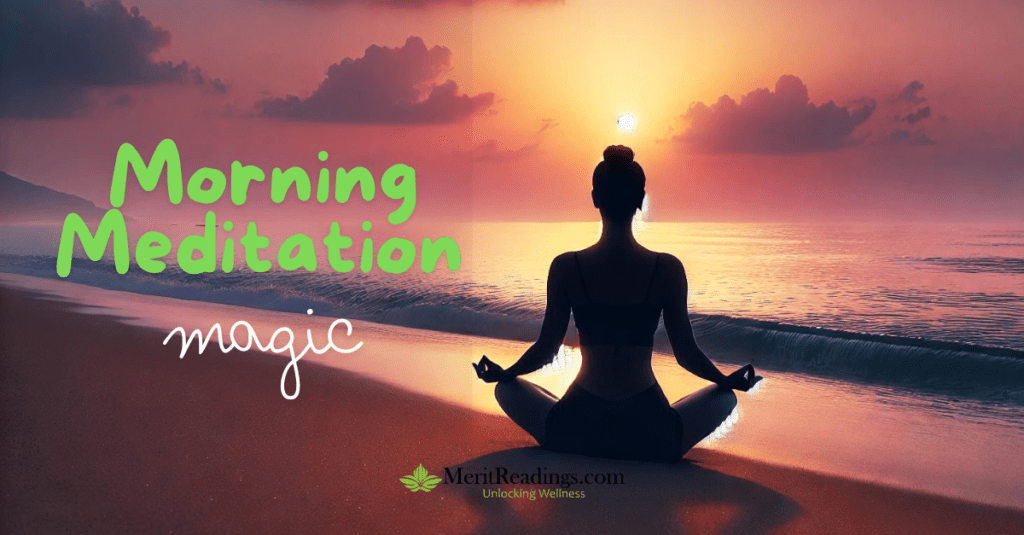Do you feel called to help others heal? Are you looking for a way to bring more peace and balance into your life and the lives of those around you? If so, learning how to become a Reiki healer might be the perfect path for you.
This journey is a beautiful one, filled with self-discovery, healing, and personal growth. It opens the door to understanding and working with universal life energy to bring balance to the body, mind, and spirit. Becoming a reiki master is not just about learning techniques—it’s about living with kindness, patience, and love.
As you walk this path, you’ll learn to calm your mind, heal your emotions, and help others feel better too. It’s a journey of connection, mindfulness, and compassion, where you learn to trust your intuition and live in a way that brings peace to yourself and others. Whether you want to heal yourself, help loved ones, or build a healing practice, this path offers a way to make a real difference.
Ready to take the first step? Let’s begin.
- Step 1: Understand What Reiki Is
- Step 2: Learn the Five Reiki Principles
- Step 3: Find a Reiki Master
- Step 4: Complete Reiki Training Levels
- Step 5: Practice Self-Healing Daily
- Step 6: Offer Reiki to Others
- Step 7: Develop Your Intuition
- Step 8: Consider Certification
- Step 9: Set Up Your Reiki Practice (Optional)
- Step 10: Continue Learning and Growing
- Step 11: Embrace the Reiki Healer’s Mindset
- Resources for Reiki Beginners
- Conclusion
Step 1: Understand What Reiki Is

Before you start training, take time to understand what Reiki is. Reiki means “universal life energy” and is based on the idea that energy flows through all living things. When this energy is low or blocked, it can cause stress, illness, or emotional imbalance. A Reiki healer helps clear these blockages by channeling healing energy through their hands.
Ways to learn about Reiki:
- Read books or articles about Reiki.
- Watch videos or listen to podcasts about Reiki healing.
- Join online Reiki communities to hear from experienced healers.
Step 2: Learn the Five Reiki Principles

Reiki is not just about healing techniques; it’s also a way of life. The Five Reiki Principles (or precepts) are central to the practice:
- Just for today, I will not be angry.
- Just for today, I will not worry.
- Just for today, I will be grateful.
- Just for today, I will do my work honestly.
- Just for today, I will be kind to every living thing.
These principles help you cultivate a peaceful and mindful mindset, which is essential for effective healing.
Step 3: Find a Reiki Master

A Reiki Master is someone who has completed the highest level of Reiki training and can teach others. Finding the right teacher is important because they will guide you through your journey.
- Search online with the keywords: “reiki masters in the philippines” or “reiki masters near me”.
- Visit wellness centers or spiritual healing groups.
- Ask for recommendations from people who practice Reiki.
When choosing a Reiki Master:
- Make sure you feel comfortable with them.
- Ask about their experience and teaching style.
- Check if they offer ongoing support after the training.
Step 4: Complete Reiki Training Levels

Reiki training is divided into three levels (sometimes four, depending on the system). Each level involves learning specific techniques and receiving attunements. An attunement is a sacred process where the Reiki Master helps open your energy channels so that you can access Reiki energy. This allows you to start practicing Reiki right away.
Level 1 (Reiki I) – Beginner Level
Level 1 is the beginner stage where you learn the basics of Reiki. This training usually takes one or two days, but some courses spread it over several weeks.
What you will learn in Level 1:
- The history and principles of Reiki.
- How to feel and connect with Reiki energy.
- Basic hand positions for self-healing and healing others.
- Techniques for grounding and protecting your energy.
How to perform Reiki on yourself and others.
- Focus: Self-healing and healing others through touch.
- Attunement: You’ll receive your first attunement, which opens your energy channels to Reiki.
- Practice: After Level 1, practice self-healing every day for at least 21 days. This helps you connect with the energy and strengthens your ability to pass it on. You can also offer Reiki to friends, family, or pets.
Level 2 (Reiki II) – Practitioner Level (Optional)
After practicing for a few months, you may feel ready to deepen your practice with Level 2 training. This level focuses on distance healing and using Reiki symbols to direct energy.
What You’ll Learn:
Three Reiki symbols:
- Power Symbol (Cho Ku Rei): Increases energy flow.
- Emotional/Mental Symbol (Sei He Ki): Balances emotions and mental state.
- Distance Healing Symbol (Hon Sha Ze Sho Nen): Sends Reiki across time and space.
How to send Reiki to people, situations, or past/future events.
Techniques to clear emotional and mental blockages.
- Focus: Distance healing and working with Reiki symbols.
- Attunement: You will receive another attunement to strengthen your connection to Reiki energy.
- Practice: You can start offering Reiki sessions professionally if you want. After Level 2, you’re able to work as a Reiki healer.
Level 3 (Reiki III) – Master/Teacher Level (Optional)
If you feel called to teach or want to master advanced techniques, you can pursue the Master Level. This is the highest level of Reiki training.
What You’ll Learn:
The Master symbol (Dai Ko Myo): Represents enlightenment and spiritual healing. Advanced techniques for healing and spiritual growth.How to pass attunements and teach Reiki to others. Ways to develop your unique healing style.
- Focus: Mastery of Reiki and the ability to teach and attune others.
- Attunement: The final attunement fully opens you to Reiki energy.
- Practice: Some people take the Master Level to strengthen their personal practice, while others become teachers to train new healers. You can also teach and attune others to Reiki if you choose to become a Reiki Master Teacher.
Step 5: Practice Self-Healing Daily

Practice is the key to becoming a skilled Reiki healer. Start by giving Reiki to yourself every day. Self-healing is the foundation of Reiki practice. It helps you stay balanced and strengthens your connection to Reiki energy.
How to Practice Self-Healing:
- Sit or lie down in a quiet space.
- Place your hands on different parts of your body (e.g., head, heart, stomach) using the hand positions you learned in Level 1.
- Allow Reiki energy to flow through your hands for 5–10 minutes per position.
- Focus on your breath and let go of any tension or stress.
Step 6: Offer Reiki to Others

Once you’ve completed Level 1, you can start offering Reiki to others. Offer Reiki to friends, family, or pets. Pay attention to their feedback and trust your intuition. Every session will teach you something new.
How to Perform a Reiki Session:
- Have the recipient lie down or sit comfortably.
- Use the hand positions you learned in Level 1 to share Reiki energy.
- Focus on your intention to heal and allow the energy to flow.
- Sessions typically last 30–90 minutes.
Step 7: Develop Your Intuition

Reiki is not just about following hand positions; it’s also about tuning into your intuition to guide the healing process.
Tips to Develop Intuition:
- Meditate daily to quiet your mind and connect with your inner guidance.
- Pay attention to sensations (e.g., heat, tingling) in your hands during Reiki sessions.
- Trust any images, messages, or insights that come to you during healing.
Step 8: Consider Certification

- While certification isn’t legally required to practice Reiki, it can help establish credibility and professionalism.
- Many Reiki Masters provide certificates upon completion of each level of training.
- If you plan to practice professionally, consider joining a Reiki association (e.g., the International Association of Reiki Professionals) for support and resources.
Step 9: Set Up Your Reiki Practice (Optional)
If you want to practice Reiki professionally:
- Create a Space: Set up a quiet, comfortable space for Reiki sessions.
- Advertise: Use social media, websites, or local wellness centers to promote your services.
- Set Rates: Research what other Reiki practitioners charge and set fair prices.
- Get Insurance: Some associations offer insurance for Reiki practitioners.
Step 10: Continue Learning and Growing
Becoming a Reiki healer is not just about completing courses. It is a lifelong journey of learning and growth. Keep practicing regularly and stay curious.
Ways to keep learning:
- Join Reiki share groups to practice with others.
- Attend workshops, retreats, or healing circles.
- Read books on Reiki and energy healing
- Explore advanced training in Reiki or other healing modalities.
- Trust yourself and your connection to the energy. Every session will improve your understanding and strengthen your ability to help others.
Step 11: Embrace the Reiki Healer’s Mindset
- Compassion: Approach healing with love and non-judgment.
- Humility: Remember that you are a channel for Reiki energy, not the source.
- Self-Care: Take care of your own energy to avoid burnout.
- Ethics: Always respect your clients’ boundaries and confidentiality.
Step 12:Trust the Process
- Becoming a Reiki healer is not just about learning techniques; it’s about personal and spiritual growth.
- Trust your intuition, be patient with yourself, and allow the journey to unfold naturally.
Resources for Reiki Beginners
- Books:
- Online Courses: Udemy, Coursera, or the International Center for Reiki Training offer beginner-friendly courses.
- Communities: Join Reiki groups on Facebook or Meetup to connect with others.
Conclusion
Becoming a Reiki healer is a beautiful journey of growth and learning. Each step you take builds your connection with the energy and helps you bring healing and peace to yourself and others. Reiki is more than just a practice — it’s a way of life that brings balance, love, and calm. As you follow this path, you will not only help others but also grow spiritually, finding peace within yourself. With patience, an open heart, and a desire to learn, you can embrace Reiki’s gentle power and share its light with the world. Trust the process, enjoy the journey, and let Reiki guide you every step of the way.



